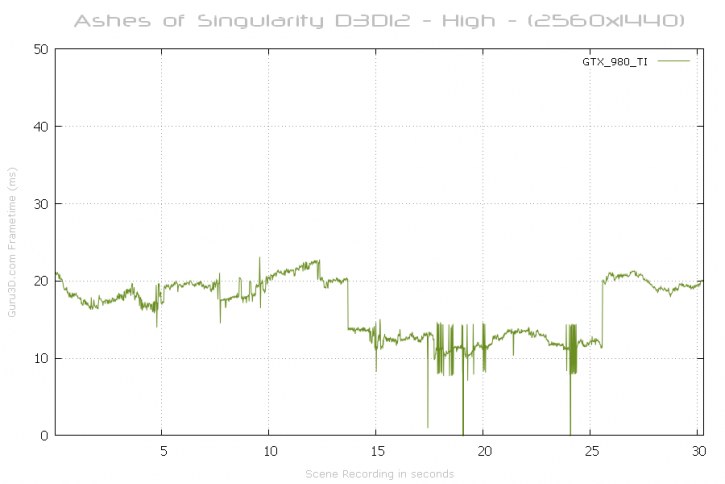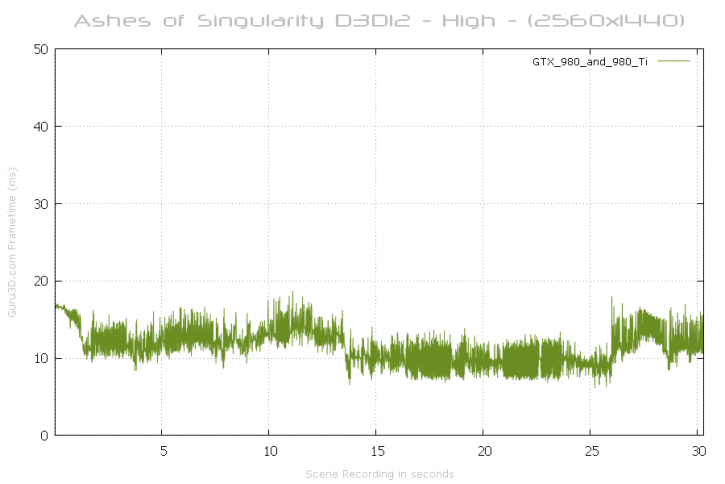DirectX 12: Explicit Multi-GPU : FCAT latency performance
DirectX 12: Explicit Multi-GPU : FCAT latency performance
With a benchmark technology called FCAT on the following two pages, we will look into Frame Experience Analysis. Basically with the charts shown we are trying to show you graphics anomalies like stutters and glitches in a plotted chart. Lately there has been a new measurement introduced, latency measurements. Basically it is the opposite of FPS.
- FPS mostly measures performance, the number of frames rendered per passing second.
- Frametime AKA Frame Experience recordings mostly measures and exposes anomalies - here we look at how long it takes to render one frame. Measure that chronologically and you can see anomalies like peaks and dips in a plotted chart, indicating something could be off.
| Frame time in milliseconds |
FPS |
| 8.3 | 120 |
| 15 | 66 |
| 20 | 50 |
| 25 | 40 |
| 30 | 33 |
| 50 | 20 |
| 70 | 14 |
We have a detailed article (read here) on the new FCAT methodology used, and it also explains why we do not use FRAPS anymore. Frametime - Basically the time it takes to render one frame can be monitored and tagged with a number, this is latency. One frame can take say 17 ms. Higher latency can indicate a slow framerate, and weird latency spikes indicate a stutter, jitter, twitches; basically anomalies that are visible on your monitor.
What Do These Measurements Show?
Basically, what these measurements show are anomalies like small glitches and stutters that you can sometimes (and please do read that well, sometimes) see on screen. Below I'd like to run through a couple of titles with you. Bear in mind that Average FPS matters more than frametime measurements.
Right, we are now focusing on the GeForce cards sole on this page. The second we add a Radeon card, VSYNC kicks in making the recording VSYNC enabled and thus useless.
As the FPS benchmarks have shown, combining a GeForce GTX 980 and 980 Ti actually works and shows an increase in performance. But learning experiences in the past have teaches us that RAW and brute Multi GPU implementations often can result in a phenomenon called micro-stutter. Basically multi GPU solutions apply AFR (alternate frame rendering), two GPUs alternate in processing frames. These days with Crossfire and SLI both AMD and Nvidia keeps things smooth by syncing and even delaying frames. By syncing both vendors are delaying one frame to compensate the offset that you normally get when rendering as fast as possible.
Let me first grab the result from the previous page, a single card:
A single card with just one GPU doesn't have to deal with stuff like frame pacing. Aside from some small anomalies we see a reasonably okay rendering here with no on-going micro-stuttering. Now let's load up the GTX 980 and GTX 980 Ti in the Explicit Multi-GPU mode:
And boom ... there is is again, frames bouncing up and down with a latency up-to even 7ms per frame. Above what you see is a classic pattern for micro-stuttering. A problem that took us years to get rid of is now back.



